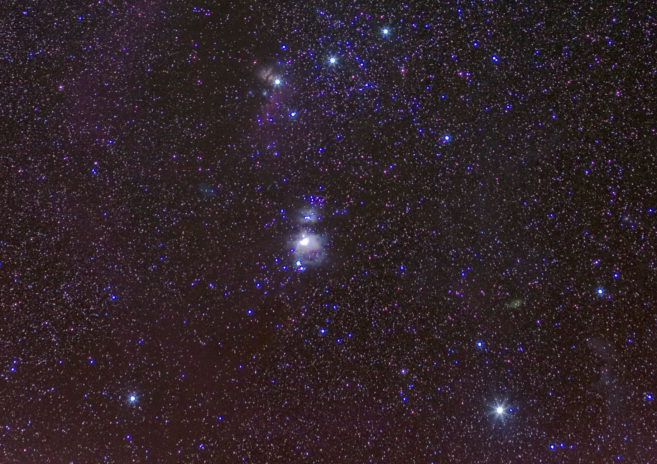Does Psalm 104 Affirm Progressive Creation?
How are God’s acts of creation (bârâ’) in Genesis 1 best understood? Were they a series of discrete events in each of six “days” (yôm)? Or did they represent a process of ongoing creativity within those “days”? Psalm 104 may provide insight into these questions.
Hebrew Context for Interrelated Texts
According to Genesis 1, the Spirit of God (rûach) was present during six “days” of creative activity (bârâ’). It seems significant that Psalm 104 includes these same Hebrew words:
When you take away their [creatures: châyâh] breath, they die and return to the dust. When you send your Spirit (rûach), they are created (bârâ’), and you renew the face of the ground (Psalm 104:29b–30).
Rûach in Psalm 104 recalls the creative Spirit of God in Genesis 1, and bârâ’ recalls the creation of the universe, animals, and humans.
Psalm 104 is essentially a song of praise to God for his power over creation and for his providence—including care for and power over his creatures. Moreover, the psalm seems to relate to Genesis 1 by acknowledging God’s creation of the earth and his provision for the life-forms he created. Old Testament scholar Derek Kidner even suggests that verses 1–23 sequentially follow days one through four, and that verses 21–26 relate to days five and six—though in reverse order and overlapping day four.1 Whether or not the passages correspond to that extent, Psalm 104:1–28 shows that God’s creative acts in Genesis 1 were not isolated but interrelated, with each day’s activity building to a complex ecosystem through which God provides for his creation.
Is There A Creation/Extinction/New Creation Pattern?
The focus of this article is verses 24–30, which proclaim that all creatures (châyâh) are created by God and dependent upon him. Verses 27–28 affirm that creatures look to God for their food, with verse 28b stating, “when you open your hand, they are satisfied . . .” Verse 29b takes this a step further by showing that this dependence is literally a life or death matter: “when you take away their breath, they die and return to the dust.”
Verse 29b is often interpreted as referring merely to the life/death cycle of individual creatures. However, note what immediately follows: the proclamation in verse 30 of bârâ’ creation of creatures (châyâh) through the Spirit of God (rûach), and of renewal—using the same words found in the Genesis 1 creation account. The psalmist’s use of these words suggests a deeper meaning; and considering the relation of Psalm 104 to the Genesis 1 creation account, these verses may be intended to build on Genesis 1.
We suggest Psalm 104:29–30 supplements Genesis 1 by describing the extinction/creation cycle observed by paleontology. According to the fossil record, the last 600 million years or so have been characterized by several cycles of a sudden emergence of a variety of life-forms in a burst of creative activity, then mass extinctions, then another burst of creative activity, and a repetition of the cycle. For example, about 540 million years ago the Cambrian explosion took place—an event for which paleontologists at the University of California Berkley observe that “[a]lmost every metazoan phylum with hard parts, and many that lack hard parts, made its first appearance in the Cambrian.” The authors of a biology textbook elaborate: “All of the main phyla and divisions of organisms that exist today—except for the land plants—evolved” over a geologically brief period.2 Yet these appearances were followed by mass extinctions, as another biology textbook states: “Once all the basic niches were taken, however, this frenzy of new forms not only came to a stop, it was pruned back.”3 There is scholarly disagreement about dates and extinction percentages, but as a point of reference, the Encyclopedia Brittanica estimates around 85% of these life-forms went extinct about 100 million years later.4
Explosions of new life-forms then appeared in another burst of God’s creative activity,5 followed by another period of mass extinctions and additional similar cycles. For example, Encyclopedia Brittanica identifies at least four more mass extinctions: an estimated 70% of life-forms went extinct about 340 million years ago,6 95% about 250 million years ago,7 76% about 200 million years ago,8 and 80% about 65 million years ago.9 (This latter event is believed to be what wiped out dinosaurs.) Other sources identify a sixth creation/extinction cycle that occurred in the Precambrian period: the Avalon explosion. Despite dispute over the details, the scientific consensus is that “evolution” did not proceed in the smooth, continuous process predicted by neo-Darwinian theory. Instead, the past 600 million years or so have been characterized by a creation, mass extinction, new creation cycle—all long before the advent of humans on day six, estimated at 50,000–300,000 years ago.
Furthermore, the creation events did not revive the life-forms that had become extinct. For example, although the main phyla and divisions of organisms evident in the Cambrian period were retained after its mass extinction event, the life-forms that appeared after were new and different. Similarly, dinosaurs did not reemerge after their extinction about 65 million years ago;10 other animals took their place. This is the pattern suggested by bârâ’ in Psalm 104:30, because a study of uses of the word beyond Genesis 1 shows that it typically describes the creation of something conceptually new, as shown in Exodus 34:10 and Numbers 16:30.
The Focus of Creation Texts
But why, one might ask, is this information not part of the creation story in Genesis 1, which merely states that sea creatures and birds were created on day five, and land animals and humans on day six? We suggest that Genesis 1 is a summary of God’s creative activity, building up to the creation of humans as God’s image-bearers at the end of day six. As such, it omits details about the creation process on days five and six, and some of these details are supplied by Psalm 104.
Genesis 1 also alludes to changing conditions in the universe and on Earth between creation and now. Science agrees. Various models estimate it took almost 4.6 billion years for the created Earth to attain the environmental conditions that support today’s life-forms, and there were multiple intermediate conditions along the way. This process could explain the extinction/creation cycles: life-forms became extinct due to a changing environment, and new life-forms adaptable to the new conditions were created. Moreover, if the focus of Genesis 1 is the creation of humans, such intermediate life-forms may have been necessary to bring about habitable conditions on Earth so humans might “subdue and rule” over creation. For example, scientists believe the extinction of dinosaurs resulted in petroleum: the lifeblood of today’s advanced society.
In summary, if our interpretation of Psalm 104 is correct, the Bible was once again ahead of science in its description of our natural world. In contrast to evolutionary theory, the Scriptures describe the extinction/creation cycle of life-forms as Earth moved from its earliest environment and simplest life-forms to the conditions and life-forms we observe today. This match between the biblical accounts and the fossil record gives us confidence that the Bible reveals truth about the natural realm.
Endnotes
- Derek Kidner, Psalms 73–150, Tyndale Old Testament Commentaries (Downers Grove, IL: InterVarsity Press, 1973), 368.
- Sandra Alters and Brian Alters, Biology: Understanding Life (Hoboken, NJ: John Wiley & Sons, 2006), 289.
- David Krogh, Biology: A Guide to the Natural World, 3rd ed. (Upper Saddle River, NJ: Pearson Prentice Hall, 2005), 380–381.
- Encyclopaedia Britannica Online, s.v. “Ordovician-Silurian extinction,” accessed September 27, 2021.
- The graphic is intended to illustrate the creation/extinction process. It is not to be taken literally, since it comes from an evolutionary source. It suggests a gradual increase in life-forms in each period.
- Encyclopaedia Britannica Online, s.v. “Devonian Extinctions,” accessed September 27, 2021.
- Encyclopaedia Britannica Online, s.v. “Permian Extinction,” accessed September 27, 2021.
- Encyclopaedia Britannica Online, s.v. “End-Triassic Extinction,” accessed September 27, 2021.
- Encyclopaedia Britannica Online, s.v. “K–T Extinction,” accessed September 27, 2021.
- The American Museum of Natural History claims that birds are dinosaurs, but none of the large dinosaurs memorialized in natural history museums exist today.






